The Do’s and Don’ts of Healthy Cooking Methods
Did you know that the way you cook your food can have a bigger impact on your health than the ingredients themselves? It’s true! Healthy cooking methods not only preserve the nutrients in your food but also help you avoid harmful compounds that can form during certain cooking processes. Whether you’re a seasoned home cook or just starting out, understanding the do’s and don’ts of healthy cooking can transform the way you eat—and how you feel.
In this article, we’ll explore the best practices for healthy cooking, common mistakes to avoid, and practical tips to make nutritious meals a regular part of your life. Let’s get started!
Table of Contents
Understanding Healthy Cooking Methods
What Are Healthy Cooking Methods?
Healthy cooking methods are techniques that maximize the nutritional value of your food while minimizing the use of unhealthy additives like excess oil, salt, or sugar. These methods focus on preserving vitamins, minerals, and other essential nutrients, ensuring that your meals are as wholesome as possible.
For example, steaming vegetables instead of boiling them helps retain water-soluble vitamins like vitamin C and B vitamins. Similarly, grilling or baking meats instead of frying reduces the amount of unhealthy fats in your diet.
Why Are Healthy Cooking Methods Important?
The way you cook your food can make or break its health benefits. For instance, frying foods at high temperatures can produce harmful compounds like acrylamide, which has been linked to cancer. On the other hand, cooking methods like steaming or sautéing can help retain nutrients and make your meals more nutritious.
Benefits of Healthy Cooking
- Improved Nutrient Retention: Cooking methods like steaming and grilling help preserve the vitamins and minerals in your food. For example, steaming broccoli retains up to 90% of its vitamin C content, while boiling can reduce it by half.
- Better Weight Management: Healthy cooking often involves less oil and fewer calories, which can support weight loss or maintenance. For instance, baking a chicken breast instead of frying it can save you hundreds of calories.
- Enhanced Flavor and Variety: Experimenting with different techniques can make your meals more exciting and satisfying. For example, roasting vegetables brings out their natural sweetness, while grilling adds a smoky flavor.
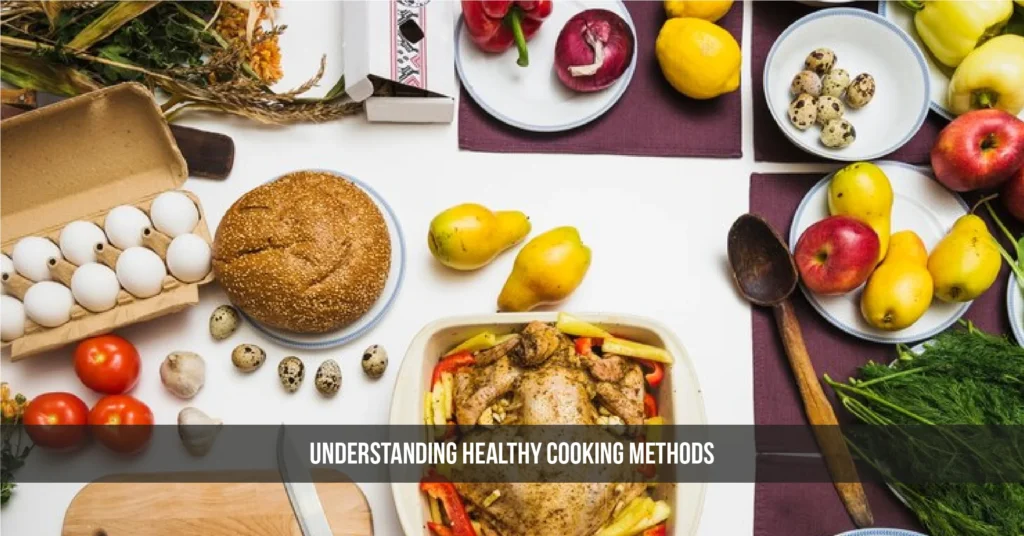
The Do’s of Healthy Cooking Methods
Use Healthy Cooking Oils
Not all oils are created equal. Some, like olive oil and avocado oil, are rich in heart-healthy monounsaturated fats. These oils are great for sautéing, roasting, and even drizzling over salads. Avoid oils high in trans fats or saturated fats, such as palm oil or partially hydrogenated oils.
| Healthy Oils | Best Uses | Smoke Point |
|---|---|---|
| Olive Oil | Sautéing, dressings | 375°F (190°C) |
| Avocado Oil | High-heat cooking | 520°F (270°C) |
| Coconut Oil | Baking, light frying | 350°F (175°C) |
Tip: Always store oils in a cool, dark place to prevent them from going rancid. Rancid oils not only taste bad but can also be harmful to your health.
Opt for Grilling and Baking
Grilling and baking are excellent ways to cook meats and vegetables without adding extra fat. These methods allow the natural flavors of the food to shine while keeping the calorie count low. Plus, grilling can add a delicious smoky flavor that’s hard to resist.
- Grilling: Perfect for lean meats like chicken breast, fish, and vegetables. Just be sure to avoid charring your food, as burnt areas can contain harmful compounds.
- Baking: Ideal for casseroles, roasted vegetables, and even healthy desserts. Baking allows you to cook food evenly without the need for excess oil.
Steam Your Vegetables
Steaming is one of the best ways to cook vegetables. It preserves their color, texture, and most importantly, their nutrients. Unlike boiling, which can cause vitamins to leach into the water, steaming keeps everything intact.
How to Steam Vegetables:
- Fill a pot with about an inch of water and bring it to a boil.
- Place a steamer basket over the water and add your vegetables.
- Cover the pot and steam for 5-10 minutes, depending on the vegetable.
Best Vegetables to Steam:
- Broccoli
- Carrots
- Green beans
- Spinach
Incorporate Lean Proteins
Choosing lean proteins like chicken breast, turkey, fish, or plant-based options like tofu and legumes can make your meals healthier. These proteins are lower in saturated fats and can be prepared in a variety of ways, from grilling to baking.
Examples of Lean Proteins:
- Chicken breast (skinless)
- Turkey breast
- Fish (salmon, cod, tilapia)
- Tofu and tempeh
- Legumes (lentils, chickpeas, black beans)
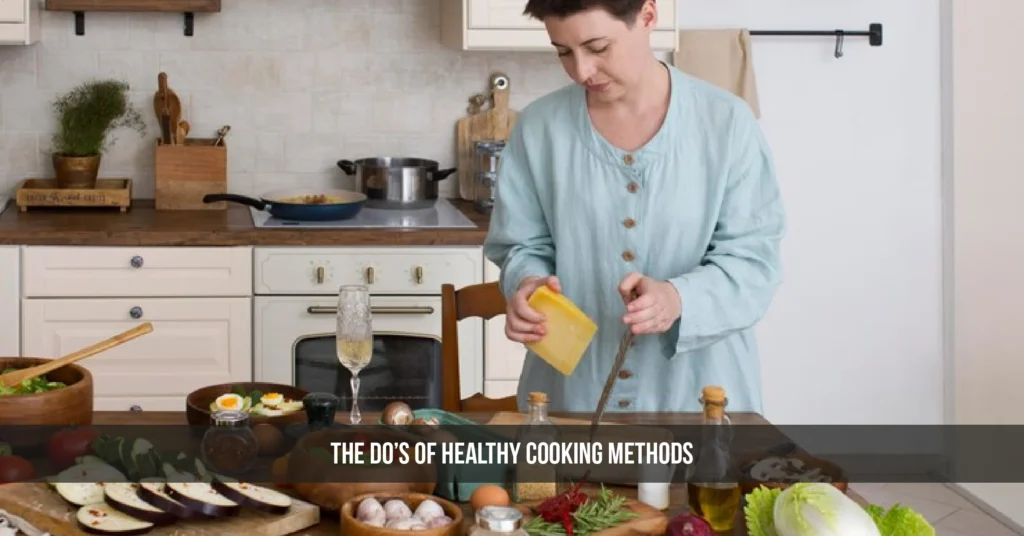
The Don’ts of Healthy Cooking Methods
Avoid Overcooking
Overcooking can destroy the nutrients in your food, especially in vegetables. For example, boiling broccoli for too long can reduce its vitamin C content by up to 50%. To avoid this, cook vegetables just until they’re tender-crisp.
Signs of Overcooked Vegetables:
- Mushy texture
- Dull color
- Loss of flavor
How to Avoid Overcooking:
- Use a timer to keep track of cooking times.
- Taste-test vegetables as they cook to ensure they’re not overdone.
- Remove vegetables from heat as soon as they’re tender.
Limit the Use of Processed Foods
Processed foods are often loaded with unhealthy additives like sodium, sugar, and preservatives. Instead of reaching for pre-packaged meals, try cooking from scratch using fresh, whole ingredients.
Examples of Processed Foods to Avoid:
- Frozen dinners
- Packaged snacks (chips, cookies)
- Canned soups (high in sodium)
- Deli meats (high in nitrates)
Healthy Alternatives:
- Fresh fruits and vegetables
- Whole grains (brown rice, quinoa)
- Homemade soups and stews
Don’t Rely on Frying
While fried foods might be tasty, they’re often high in unhealthy fats and calories. Instead of frying, try healthier alternatives like air frying, baking, or grilling.
Health Risks of Frying:
- Increased risk of heart disease
- Higher calorie intake
- Formation of harmful compounds like acrylamide
Healthy Alternatives to Frying:
- Air frying: Uses little to no oil and produces a similar crispy texture.
- Baking: Great for foods like chicken tenders or French fries.
- Grilling: Adds flavor without the need for excess oil.
Avoid Excessive Salt and Sugar
Too much salt can lead to high blood pressure, while excess sugar can contribute to weight gain and other health issues. Use herbs, spices, and natural sweeteners like honey or maple syrup to flavor your meals instead.
Tips to Reduce Salt and Sugar:
- Use herbs and spices (garlic, turmeric, paprika) to add flavor.
- Replace sugar with natural sweeteners like honey or stevia.
- Read food labels to check for hidden salt and sugar.
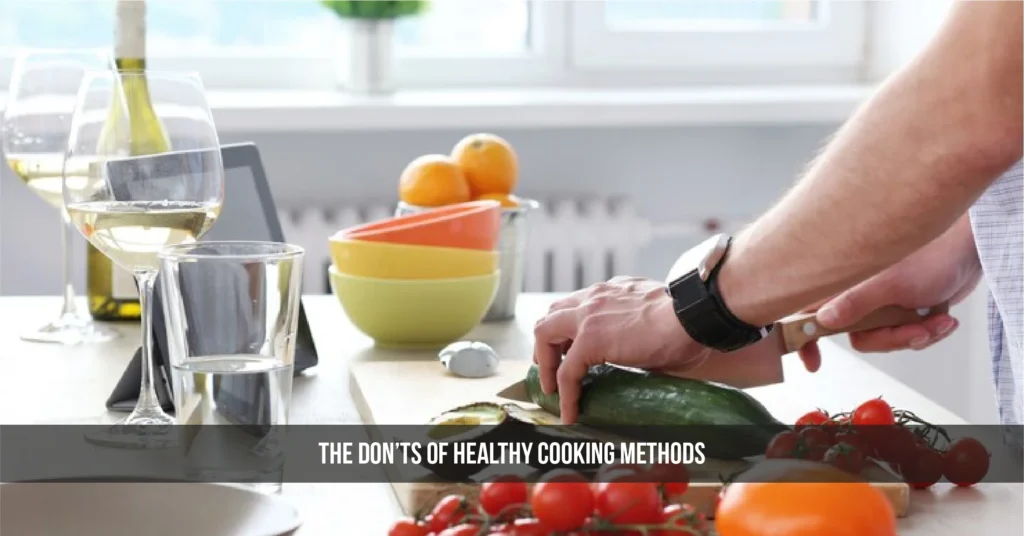
Tips for Maintaining Nutritional Value
Cooking Times and Temperatures
Cooking at the right temperature and for the right amount of time is crucial for preserving nutrients. For example, cooking vegetables at high heat for a short time can help retain their vitamins and minerals.
| Vegetable | Optimal Cooking Time | Best Method |
|---|---|---|
| Broccoli | 5-7 minutes | Steaming |
| Carrots | 8-10 minutes | Roasting |
| Spinach | 2-3 minutes | Sautéing |
Tip: Use a food thermometer to ensure meats are cooked to the proper internal temperature without overcooking.
Proper Food Storage
Storing food correctly can help maintain its nutritional value. For example, keeping vegetables in the crisper drawer of your fridge can prevent them from losing moisture and nutrients.
Storage Tips:
- Store leafy greens in airtight containers with a damp paper towel.
- Keep root vegetables (potatoes, carrots) in a cool, dark place.
- Freeze meats and leftovers to preserve their freshness.
Using Fresh Ingredients
Fresh ingredients are always the best choice for healthy cooking. They’re more nutrient-dense and free from the preservatives found in processed foods. Whenever possible, buy seasonal produce and cook it soon after purchase.
Benefits of Fresh Ingredients:
- Higher nutrient content
- Better flavor
- No added preservatives or chemicals
Practical Tips for Everyday Healthy Cooking
Meal Prepping
Meal prepping is a game-changer for anyone looking to eat healthier. By preparing your meals in advance, you can ensure that you always have nutritious options on hand, even on busy days.
How to Start Meal Prepping:
- Plan your meals for the week.
- Make a grocery list and stick to it.
- Cook in batches and store meals in portion-sized containers.
Using Kitchen Gadgets
Investing in the right kitchen gadgets can make healthy cooking easier and more enjoyable. For example, a steamer basket can help you cook vegetables perfectly, while a slow cooker can make it easy to prepare healthy soups and stews.
Must-Have Kitchen Gadgets:
- Steamer basket
- Slow cooker or Instant Pot
- Air fryer
- Blender (for smoothies and soups)
Healthy Cooking on a Budget
Eating healthy doesn’t have to be expensive. Here are a few tips to help you save money while cooking nutritious meals:
- Buy in bulk: Purchasing staples like rice, beans, and oats in bulk can save you money in the long run.
- Plan your meals: Planning your meals ahead of time can help you avoid impulse buys and reduce food waste.
- Cook in batches: Making large portions and freezing leftovers can save you time and money.
Conclusion
Healthy cooking doesn’t have to be complicated or time-consuming. By following the do’s and don’ts of healthy cooking methods, you can create meals that are not only delicious but also packed with nutrients. Remember to use healthy oils, opt for grilling or baking, and avoid overcooking your food. Small changes, like steaming vegetables instead of boiling them or swapping fried foods for air-fried alternatives, can make a big difference in your overall health.
Cooking at home allows you to take control of what goes into your meals, helping you avoid unhealthy additives and excess calories. With a little planning and the right techniques, you can enjoy flavorful, nutritious meals every day. So, why not start today? Your body will thank you!
Also Read: 7 Ways to Make Your Kitchen Non-Toxic and Waste-Free
FAQs
What are the healthiest cooking methods?
The healthiest cooking methods include steaming, grilling, baking, and sautéing. These techniques help retain nutrients and minimize the use of unhealthy fats. Steaming is particularly great for vegetables while grilling and baking work well for meats and fish.
How can I avoid losing nutrients while cooking?
To avoid losing nutrients, cook vegetables for shorter periods and use methods like steaming or sautéing. Avoid overcooking, and try to cook at lower temperatures when possible. Also, food should be stored properly to maintain its nutritional value.
What are the best oils for healthy cooking?
The best oils for healthy cooking are those rich in monounsaturated fats, such as olive oil and avocado oil. These oils are stable at higher temperatures and offer health benefits like improved heart health. Avoid oils high in trans fats or saturated fats.
Can I cook healthy meals on a budget?
Absolutely! Cooking healthy meals on a budget is possible by buying in bulk, planning meals ahead of time, and using affordable ingredients like beans, lentils, and seasonal vegetables. Batch cooking and freezing leftovers can also save money.
What are the worst cooking methods for health?
The worst cooking methods for health include deep-frying, charring, and overcooking. Deep-frying adds excessive calories and unhealthy fats while charring can produce harmful compounds. Overcooking destroys nutrients, especially in vegetables.
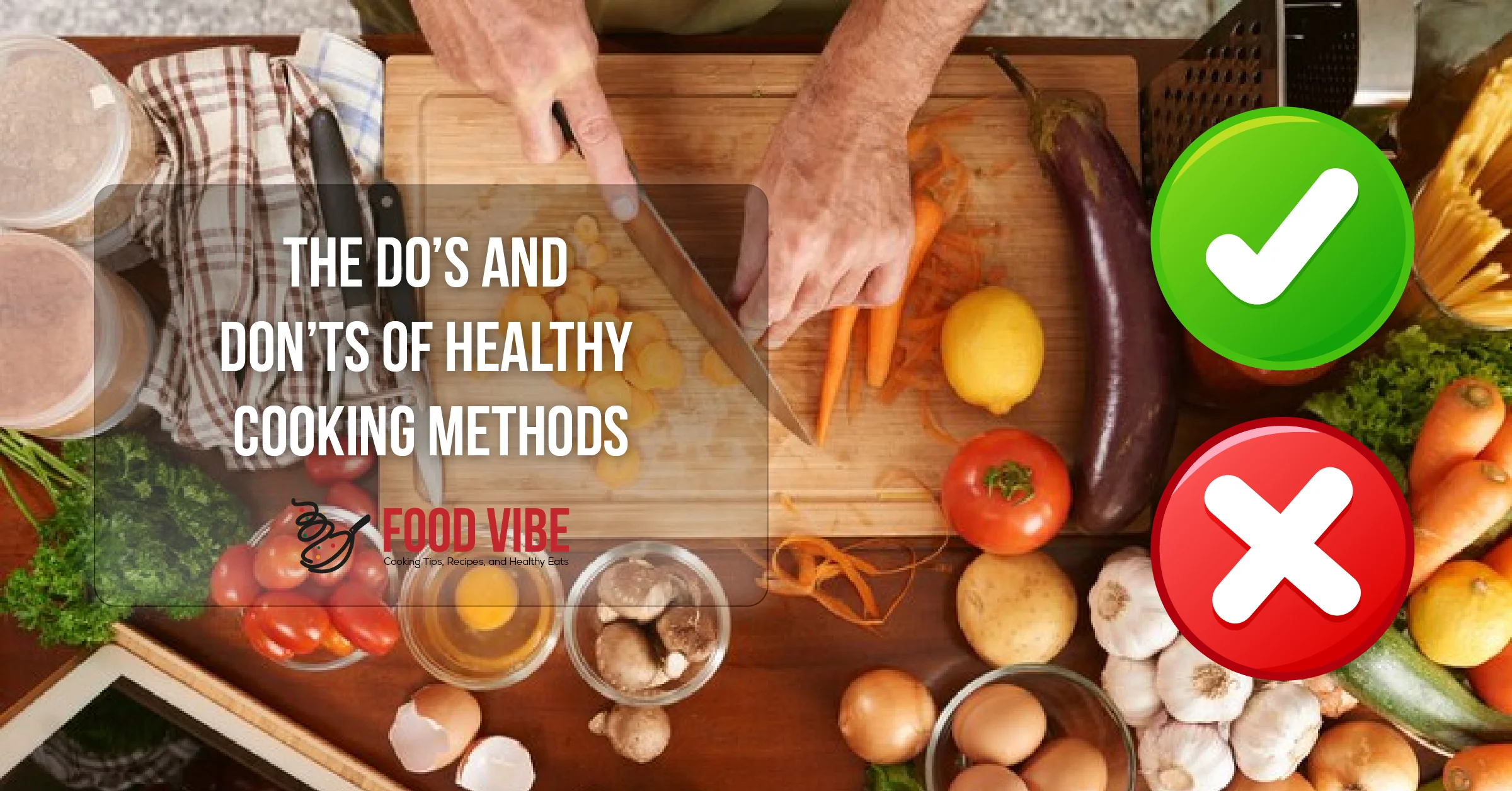
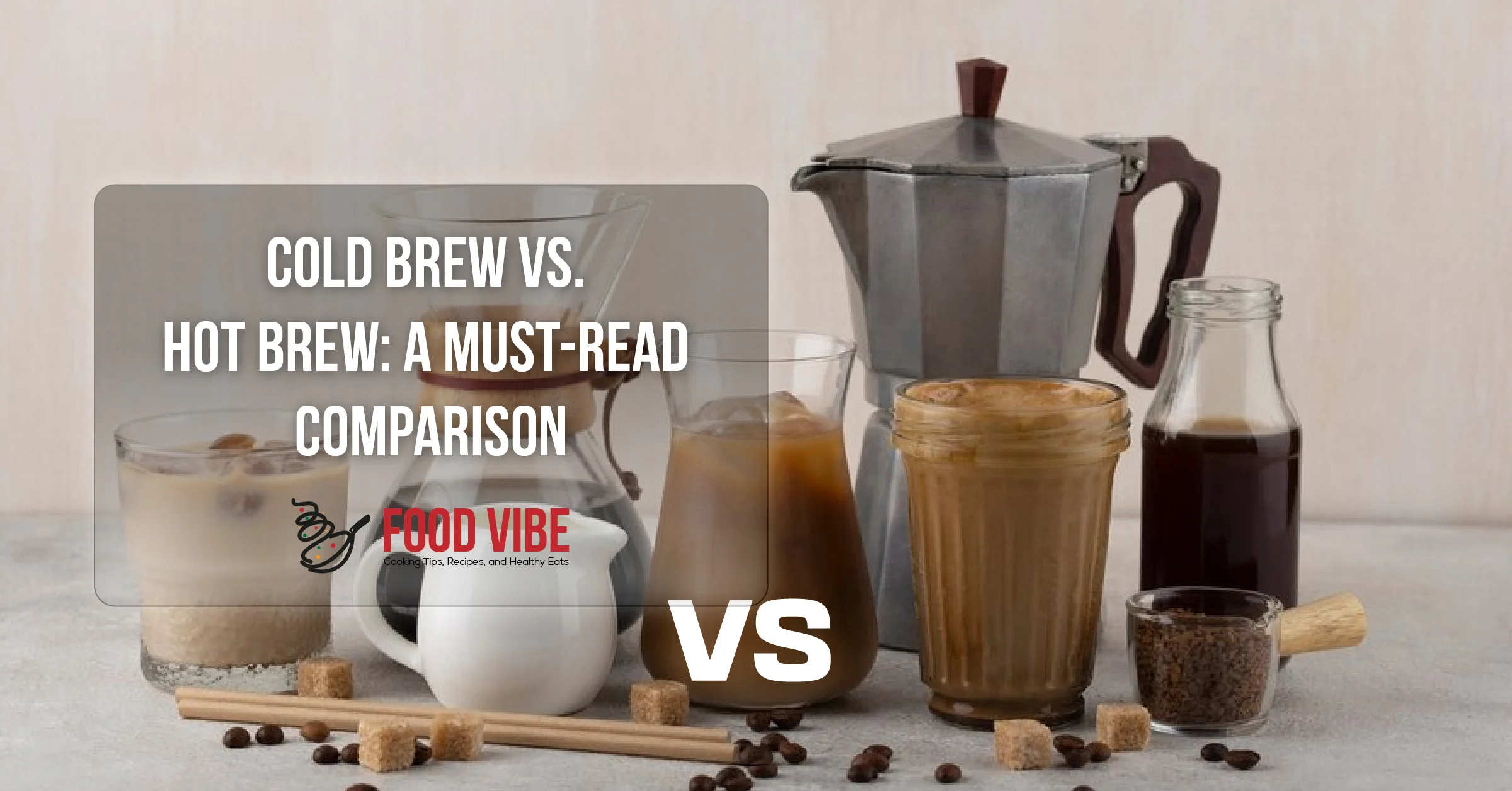
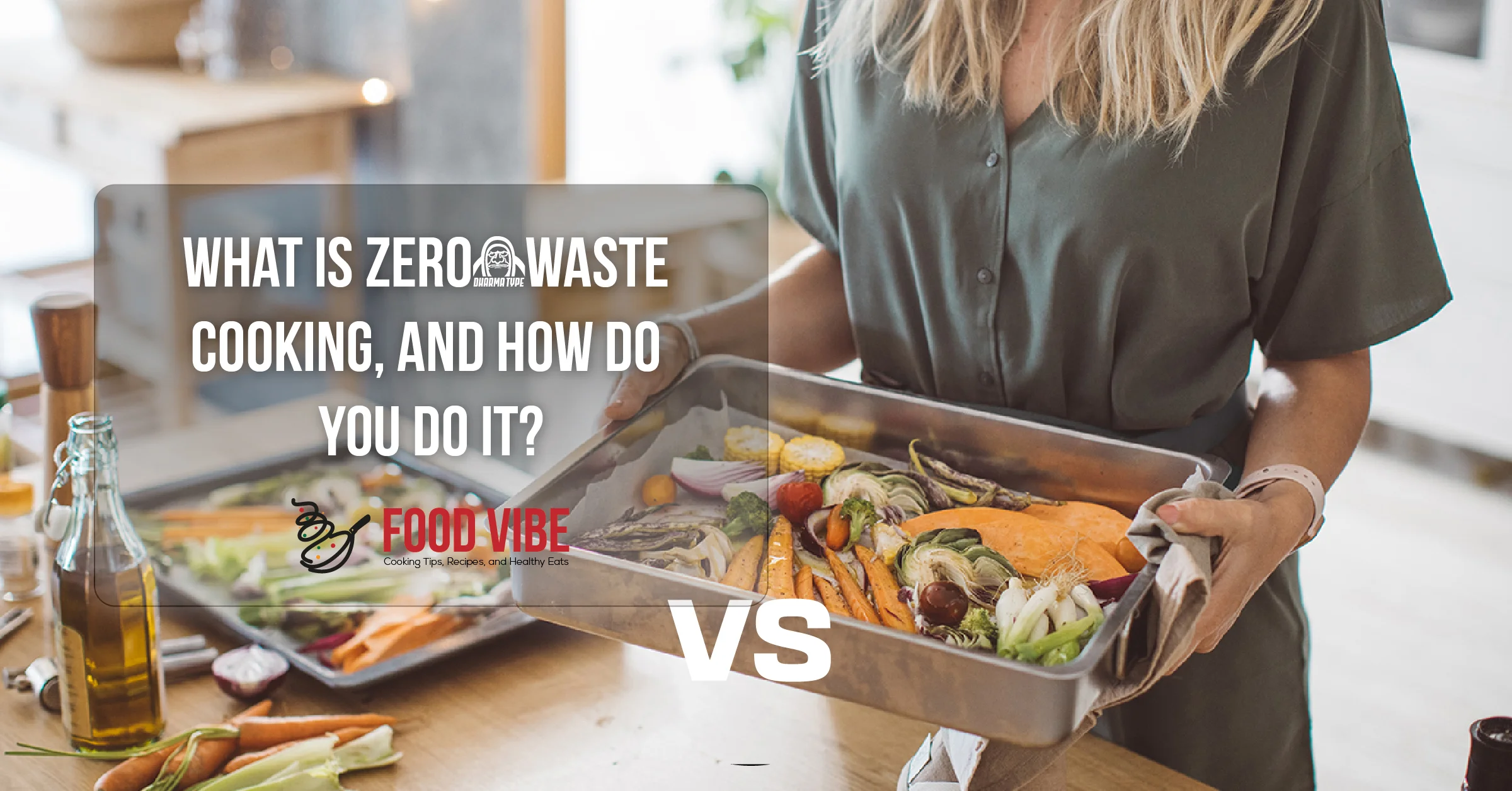
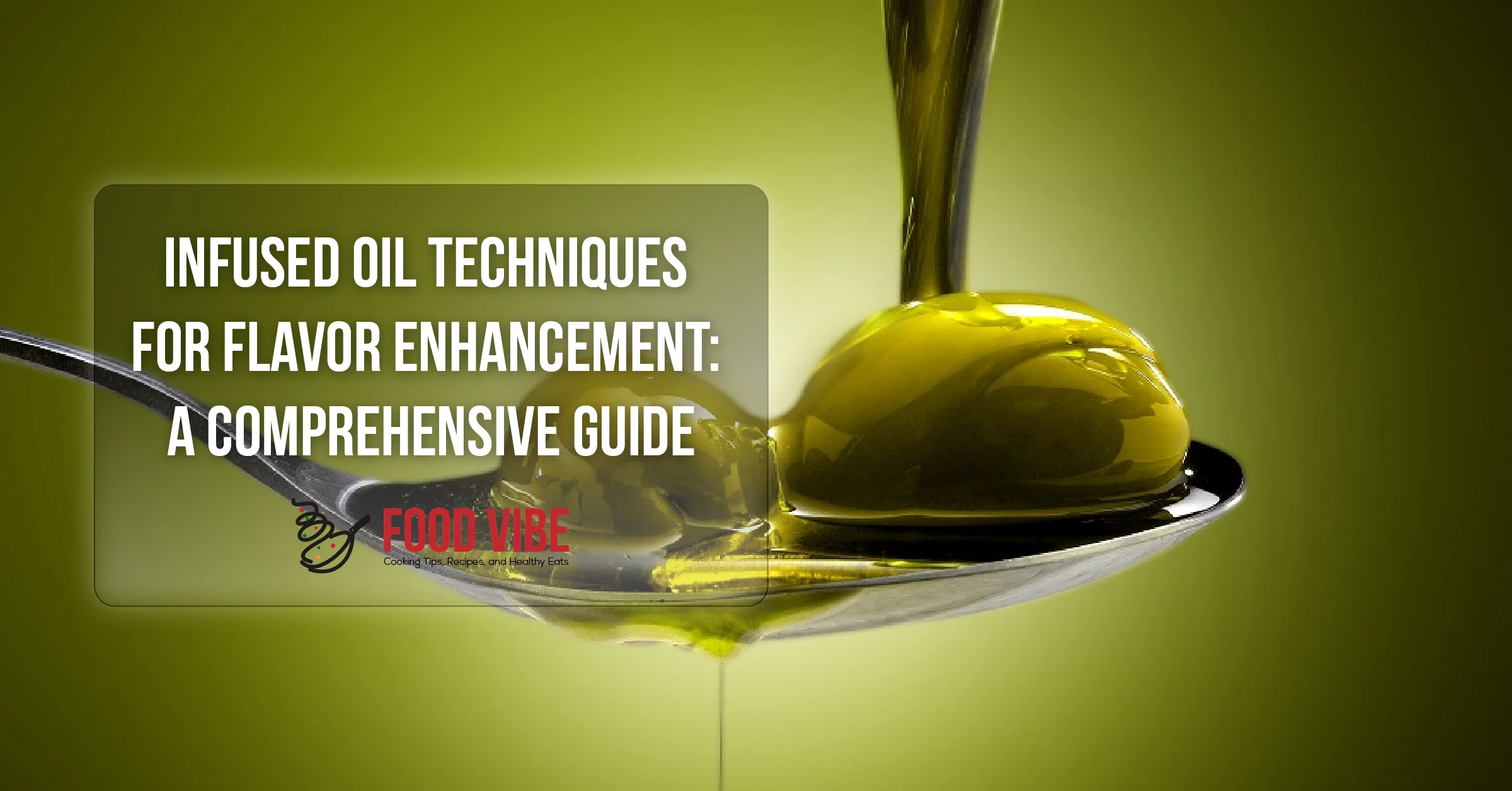




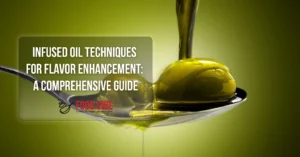


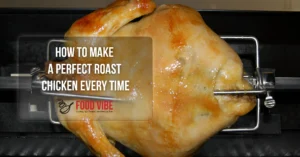


Post Comment